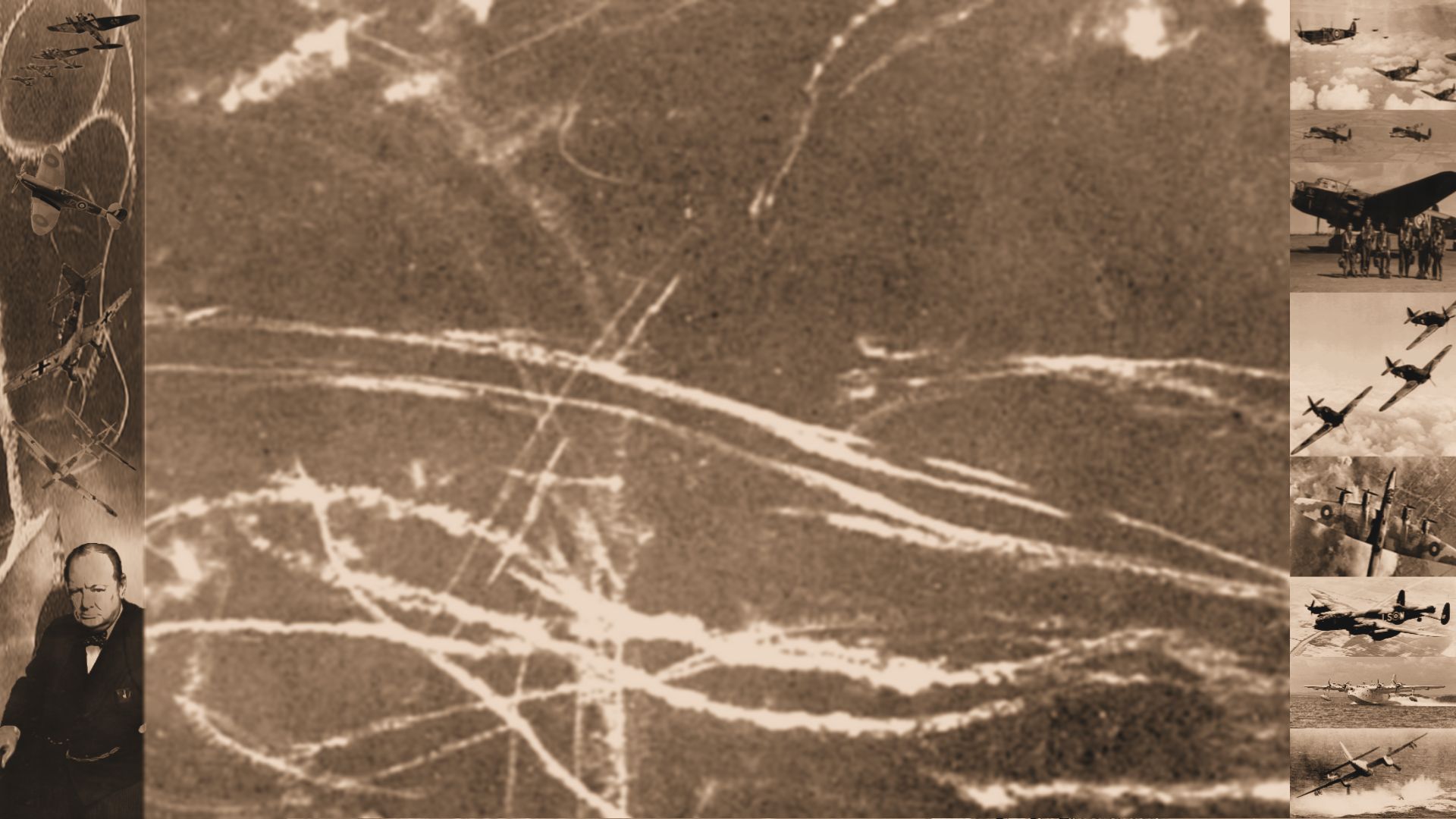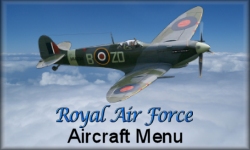Origins
While the British were not the first to make use of heavier-than-air military aircraft, the RAF is the world's oldest independent air force: that is, the first air force to become independent of army or navy control. It was founded on 1 April 1918, with headquarters located in the former Hotel Cecil, during the First World War, by the amalgamation of the Royal Flying Corps (RFC) and the Royal Naval Air Service (RNAS). At that time it was the largest air force in the world. After the war, the service was drastically cut and its inter-war years were relatively quiet, with the RAF taking responsibility for the control of Iraq and executing a number of minor actions in other parts of the British Empire. Naval aviation in the form of the RAF's Fleet Air Arm was returned to Admiralty control on 24 May 1939. The RAF developed its doctrine of strategic bombing which led to the construction of long-range bombers and became the basic philosophy in the Second World War.
Back to Top
Second World War
At the outbreak of the Second World War the British government realised it did not have adequate resources to maintain the Royal Air Force (RAF) in the impending air war in Europe. While British factories could rapidly increase their aircraft production, there was no guaranteed supply of trained aircrew. Pre-war plans had identified a need for 50,000 aircrew annually, but Britain could only supply 22,000. To overcome this problem, the British government put forward a plan to its dominions to jointly establish a pool of trained aircrew who could then serve with the RAF. In Australia the proposal was accepted by the War Cabinet and a contingent was sent to a conference in Ottawa, in Canada, to discuss the proposal. After several weeks of negotiations, an agreement was signed on 17 December 1939 which would last for three years. Under the scheme 50,000 aircrew would be trained annually, each dominion would conduct its own elementary training; advanced training would be conducted in Canada because of its closeness to the British aircraft factories and the war zone.
The RAF underwent rapid expansion prior to and during the Second World War. Under the British Commonwealth Air Training Plan of December 1939, the air forces of British Commonwealth countries trained and formed 'Article XV squadrons' for service with RAF formations. Many individual personnel from these countries, and exiles from occupied Europe, also served with RAF squadrons. In the Battle of Britain in 1940, the RAF (supplemented by 2 Fleet Air Arm Squadrons, Polish, Czech and other multinational pilots and ground personnel) defended the skies over Britain against the numerically superior German Luftwaffe. The largest RAF effort during the war was the strategic bombing campaign against Germany by Bomber Command. While RAF bombing of Germany began almost immediately upon the outbreak of war, under the leadership of Air Chief Marshal Harris, these attacks became increasingly devastating from 1942 onward as new technology and greater numbers of superior aircraft became available. The RAF adopted night-time area bombing on German cities such as Hamburg and Dresden, and developed precision bombing techniques for specific operations, such as the "Dambusters" raid by No. 617 Squadron, or the Amiens prison raid known as Operation Jericho.
Back to Top
The RAF was divided into three basic commands:-
Bomber Command
Responsible for the bombing of Germany, initially military and naval targets, but after London was bombed, German cities were also targeted. Starting with Hampdens, Wellingtons and Stirlings, these bombers were eventually replaced with Halifaxes and Lancasters. Air Marshall Sir Arthur 'Bomber' Harris was in charge of Bomber Command for the duration of the war. Bomber Command comprised a number of Groups. It began the war with Nos. 1, 2, 3, 4 and 5 Groups. No. 1 Group was soon sent to France and then returned to Bomber Command control after the evacuation of France. No. 2 Group consisted of light and medium bombers who, although operating both by day and night, remained part of Bomber Command until 1943, when it was removed to the control of Second Tactical Air Force, to form the light bomber component of that command. Bomber Command also gained two new groups during the war: the Royal Canadian Air Force (RCAF) squadrons were organised into No. 6 Group and the Pathfinder Force was expanded to form No. 8 (Pathfinder) Group from existing squadrons. In total 364,514 operational sorties were flown, 1,030,500 tons of bombs were dropped and 8,325 aircraft lost in action.
Back to Top
Fighter Command
Responsible for the defence of Great Britain, initially responsible for fighters sent to France. After the debacle of the Fall of France, Air Chief Marshall Sir Hugh Dowding implemented the defence of Britain during the summer of 1940, known as the 'Battle of Britain'. After the battle he unwillingly relinquished command in November 1940 and was replaced by Big Wing advocate, Air Chief Marshall Sir Sholto Douglas. The Command continued until 17 November 1943, when it was disbanded and the RAF fighter force was split into two categories; defence and attack. The defensive force became Air Defence of Great Britain (ADGB) and the offensive force became the RAF Second Tactical Air Force. Air Defence of Great Britain was later renamed Fighter Command. It was finally disbanded in 1968. Fighter Command was responsible for the RAF going over on the offensive in 1941 in raids and escorting bombers on tactical and nuisance raids('Rhubarbs and Rodeos'). During 1939-45, RAF Fighter Command lost 3,690 killed, 1,215 wounded and 601 POW. 4,790 aircraft were lost.
Back to Top
Coastal Command
Founded in 1936, it was the RAF's premier maritime arm, after the Royal Navy's secondment of the Fleet Air Arm in 1937. Naval aviation was neglected in the inter-war period, 1919-1939, and as consequence the service did not receive the resources it needed to develop properly or efficiently. This continued until the outbreak of the Second World War, during which it came to prominence but owing to the Air Ministry's concentration on RAF Fighter Command and RAF Bomber Command, Coastal Command was often referred to as the 'Cinderella Service'. The service saw action from the first day of hostilities until the last day of the Second World War. It flew over one million flying hours, 240,000 operations and destroyed 212 U-boats. Coastal Command's casualties amounted to 2,060 aircraft to all causes and some 5,866 personnel killed in action. From 1940 to 1945 Coastal Command sank 366 German transport vessels and damaged 134. The total tonnage sunk was 512,330 tons and another 513,454 tons damaged. A total of 10,663 persons were rescued by the Command, including 5,721 Allied crews, 277 enemy personnel, and 4,665 non-aircrews.
Back to Top
Post-war
The Royal Air Force was involved in the 1948 Berlin Airlift, codenamed Operation Plainfire. Between 26 June and the lifting of the Russian blockade of the city on May 12, 1949, the RAF provided 17% of the total supplies delivered during the event, using Avro Yorks, Douglas Dakotas flying to Gatow Airport and Short Sunderlands flying to Lake Havel. In Korea the RAF had no actual fighter forces although RAF, Royal Australian Air Force(RAAF) and Royal Canadian Air Force(RCAF) pilots who flew with the USAF during the war, flew mainly bombers, flying boats and transports. Also, RAF Sunderlands of No.205 Squadron had given air cover to United Nations naval forces bombarding Communist coastal towns in February. Aircraft of the Seletar Sunderland wing, made up of Nos 88, 205 and 209 Squadrons were based at Iwakuni in southern Japan on four-week deployments.
Back to Top
RAF pilots also served with No.77 Squadron (RAAF), they joined the squadron when it re-equipped with Gloster Meteors from P-51s and flew the first sorties from Kimpo on 30th July 1951. Two of the pilots were later lost. The MiG-15 soon appeared and the Meteor was easily out-classed by this more powerful and more agile machine and was relegated to ground-attack missions. Aircraft from Commonwealth Aircraft Carriers flew Fireflys and the Hawker SeaFurys in ground support operations during the conflict.
In the 1960's the Handley Page Victor bomber was a strategic bomber of the RAF's V bomber force used to carry both conventional and nuclear bombs. The British Government elected on 16 February 1960 to share the country's nuclear deterrent between the RAF and submarines of the Royal Navy, deciding on 13 April to concentrate solely on the air force's V bomber fleet. These were initially armed with nuclear gravity bombs, later being equipped with the Blue Steel missile. Following the development of the UGM-27 Polaris, the strategic nuclear deterrent passed to the navy's submarines on 30 June 1969.
Back to Top
At present
After the Cold War, the RAF was involved in several large-scale operations, including the Gulf War, the Kosovo War, operations in Afghanistan, the 2003 invasion of Iraq, the subsequent war and the Libyan civil war. The RAF celebrated the 90th anniversary of its formation on 1 April 2008 with a flypast of the Red Arrows and four Typhoons over many RAF Stations and Central London. As part of the 2010 Strategic Defence and Security Review, the BAE Systems Nimrod MRA4 aircraft was cancelled due to over spending and missing deadlines. It was due to have replaced the Nimrod MR2 from late 2011, which fulfilled the Anti-Submarine Warfare and Anti-Surface Unit Warfare roles. It also saw use in a Search and Rescue role, where its long range and communications facilities allowed it to co-ordinate rescues by acting as a link between rescue helicopters, ships and shore bases. It could also drop pods containing life rafts and survival supplies to people in the sea. After the MR2's withdrawal, the search and rescue role was adopted by the C-130 Hercules force, and the Royal Navy took full responsibility for anti-submarine warfare.
Back to Top







